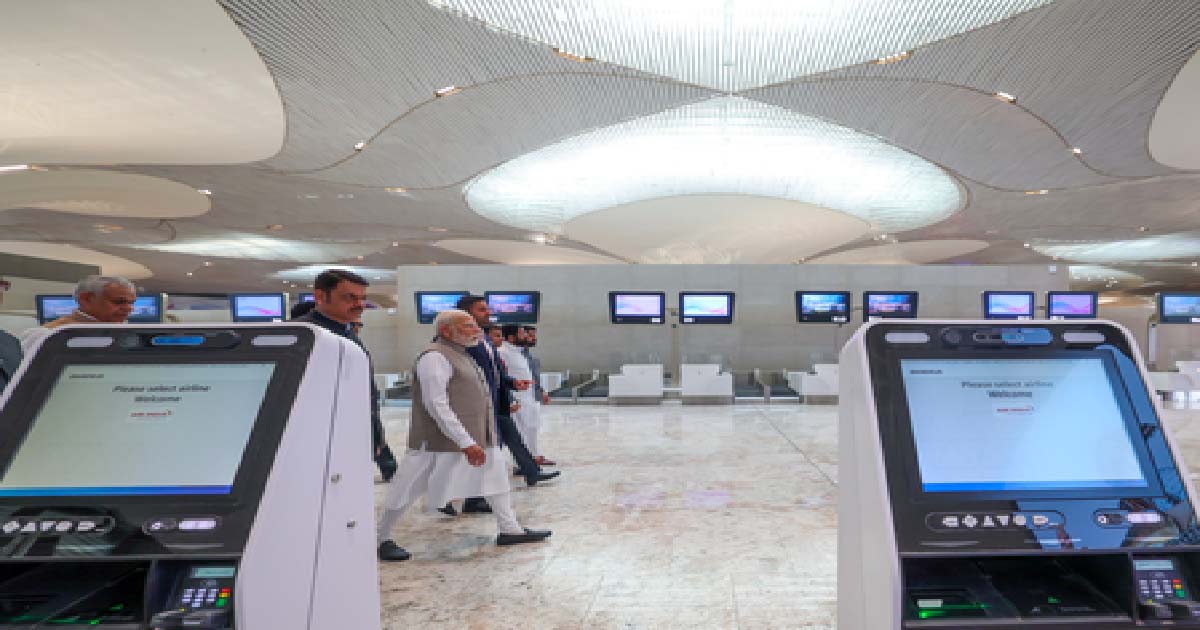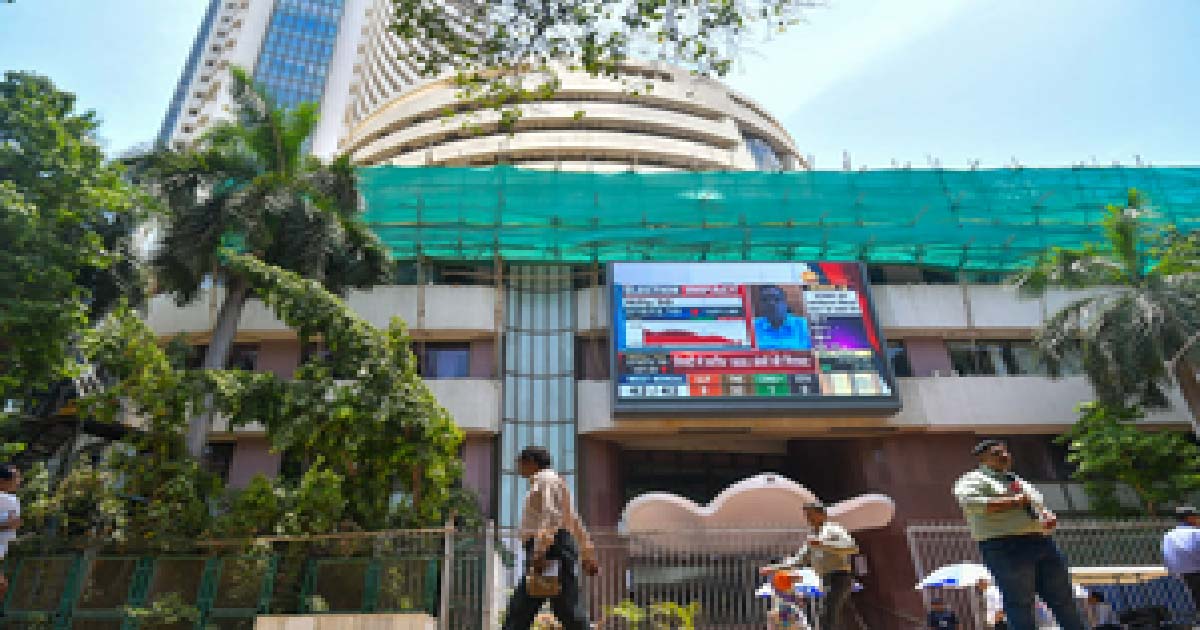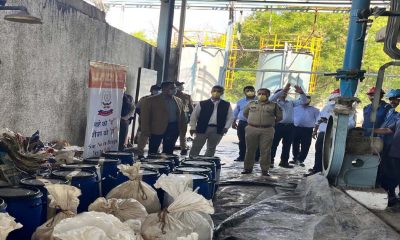Business
Mumbai: 58-tanker fleet owner operates from nondescript mall in Bhandup

Operating from the rundown Neptune Magnet Mall in suburban Bhandup, Gatik Ship Management has emerged as the biggest international tanker fleet owner, transporting Russian crude oil to India. The shipping company has seen phenomenal growth, starting with just two tankers in 2021 and going on to acquire a 58-strong fleet valued at US$ 1.6 billion in just 18 months, registered largely in St Kitts and Nevis.
Mumbai-based Gatik, registered as an exporter, has shipped 83 million barrels of crude and oil products from Russian oil giant Rosneft, to Indian ports. However, when The Free Press Journal visited Neptune Magnet Mall, it found the office of Gatik Ship Management, on the third floor, locked, with a ‘For Rent and Sale’ sign pasted on the main door. Enquiries with the neighbouring offices revealed that Gatik shared office space with Buena Vista Shipping.
Buena Vista provided shipping jobs and recruitment for seafarers and crew. Both the shipping companies had the same registered office at Neptune Magnet Mall with the registrar of companies and had relocated to Powai.
Gatik acquired 56 vessels since March 2022
The ageing fleet of Gatik oil tankers did not have an insurance cover from any recognised, large mutual providers and had earlier transported crude oil from around the world but was now focussing solely on Russian oil.
Shipping expert VesselsValue, which tracks ship sales, has claimed that Gatik acquired 56 vessels since March 2022, with 13 vessels in December 2022 when the European Union ban on Russian oil began. Gatik added 10 ships to its fleet in 2023, with VesselsValue reporting its fleet as being made up of 44 tankers with an average age of 17 years, now worth $1.39bn.
According to VesselsValue, Gatik’s newly acquired fleet of oil tankers has largely shipped 83 million barrels of Russian crude oil to India.
The Office of Foreign Assets Control of the US Department of the Treasury (OFAC) had recently warned US shipping service providers to guard against facilitating sanctioned trade amidst the rise of a global ‘ghost fleet’ of opaquely owned vessels willing to risk sanctions and serving lucrative oil markets.
The International Group of Protection & Indemnity Clubs had withdrawn cover for most of the tankers operated by Gatik. The 12 members of the IGP&I provide cover to around 95 per cent of the world’s fleet.
Under international sanctions applied by G7 countries and Australia, shipowners are required to provide insurers and other service providers, with attestations that they are not carrying Russian oil purchased above the price cap.
Russian oil exports from its eastern ports like Kozmino, have regularly traded above the price cap, triggering international sanctions. The American Steamship Owners Mutual Protection and Indemnity Association, Inc. (The American Club), was the single largest provider of insurance services to Gatik.
About Gatik’s growth
Gatik Ship Management has seen phenomenal growth, starting with just 2 tankers in 2021 and going on to acquire a 58-strong fleet valued at US$ 1.6 billion in just 18 months, registered largely in St Kitts and Nevis. According to shipping expert Vessels Value, Gatik,s newly acquired fleet of oil tankers has largely shipped 83 million barrels of Russian crude oil to India.
Business
IndiGo to start flights from Navi Mumbai International Airport from Dec 25

Mumbai, Nov 15: Low-cost airline IndiGo on Saturday announced flight operations from the newly-opened Navi Mumbai International Airport (NMIA) starting December 25, connecting the airport to 10 cities across the country.
IndiGo will connect the future-ready airport to 10 cities, including Delhi, Bengaluru, Hyderabad, Ahmedabad, Lucknow, North Goa (Mopa), Jaipur, Nagpur, Cochin, and Mangalore, the airline said in a statement.
The airline said it plans to expand operations at NMIA progressively by adding direct routes to more destinations in due course.
NMIA, the second airport in the Mumbai metropolitan area, is designed to complement Chhatrapati Shivaji Maharaj International Airport and meet growing demand for air travel from India’s financial capital.
NMIA is expected to enhance regional connectivity and support economic development in western India due to its strategic location.
By enhancing regional connectivity and supporting economic development in western India, the launch of IndiGo’s operations will connect the airport to its vast domestic network of 95 airports across the country, it added.
The Navi Mumbai International Airport was inaugurated by Prime Minister Narendra Modi last month, as a major achievement in India’s economic development and “a symbol of Bharat’s aspirations”.
PM Modi said that Mumbai welcomed its second international airport, marking a significant milestone in its journey to becoming Asia’s premier connectivity hub. “Through this new airport, the farmers of Maharashtra will be able to connect with supermarkets in Europe and the Middle East as well,” he observed.
NMIA will ease congestion at Chhatrapati Shivaji Maharaj International Airport and significantly increase India’s aviation capacity.
The Navi Mumbai International Airport Private is designed to accommodate both domestic and international passengers, featuring state-of-the-art facilities. It includes a 3,700-metre runway capable of handling large commercial aircraft, modern passenger terminals, and advanced air traffic control systems.
Business
Stock markets end week on a strong note as NDA secures landmark win in Bihar

Mumbai, Nov 15: Indian equity markets ended the week on a strong note, with benchmark indices gaining on the resolution of the US government shutdown, supported by strong domestic fundamentals, better-than-expected Q2 earnings, easing inflation and NDA’s historic victory in Bihar, according to analysts.
Record-low October inflation reinforced expectations of an RBI rate cut, adding momentum to domestic equities.
According to Vinod Nair, Head of Research, Geojit Investments Limited, sectoral momentum was broad-based, led by gains in IT, Pharma, healthcare and Auto stocks.
“Toward the week’s close, the NDA’s Bihar election victory bolstered investor confidence, but fading expectations of a U.S. Fed rate cut triggered profit booking in IT stocks, tempering their earlier gains,” he mentioned.
The indices remained under pressure for most of the session on Friday, oscillating between losses and brief recoveries, before a strong late-afternoon rebound pushed them into the green.
Volatility picked up as markets tracked the Bihar election outcome, the day’s key trigger.
Sentiment was also weighed down by weak global cues after Wall Street fell sharply overnight, led by declines in Nvidia and other tech majors as investors dialled back hopes of near-term rate cuts amid lingering inflation worries, according to a note by Bajaj Broking Research.
At close, the Sensex ended 84 points or 0.1 per cent higher at 84,563, while the Nifty finished 31 points up at 25,910. Sectoral trends were mixed, with PSU banks leading gains at 1.17 per cent, followed by firm moves in pharma and FMCG.
Energy and infrastructure saw mild upticks. On the downside, IT declined 1.03 per cent, while auto, metal, and realty ended lower.
Among the broader market space, Nifty Small-cap 100 rose 0.38 per cent, while the Midcap 100 gained 0.08 per cent.
According to analysts, Nifty on the weekly chart has formed a strong bull candle with a higher high and a higher low signaling pullback after two weeks of corrective decline, “in line with our expectations from the key support area of 25,400-25,300”.
Going ahead, bias continues to remain positive and a follow through strength above last month high of 26,100 will open upside towards the previous all-time high of 26,277 in the coming week.
Looking ahead, market direction will hinge on key macro triggers such as India’s PMI data, US jobless claims, FOMC minutes and progress on US–India trade negotiations.
Business
Panvel Municipal Corporation Clears ₹48.40 Crore Gadhi River Bridge Project To Ease Traffic Congestion On Panvel–Karanjade Stretch

Panvel, November 14: In a major infrastructure push aimed at reducing traffic congestion and improving connectivity, the Panvel Municipal Corporation has cleared a proposal to construct a new bridge over the Gadhi River near the Karanjade sewage pumping station.
Municipal Commissioner and Administrator Mangesh Chitale approved the plan following demands raised by Panvel MLA Prashant Thakur and Uran MLA Mahesh Baldi, who highlighted the daily inconvenience faced by commuters travelling between Panvel, Karanjade and Vadghar’s CIDCO colonies.
According to civic officials, the existing bridge toward Karanjade routinely experiences heavy traffic, often resulting in prolonged congestion. With the upcoming Navi Mumbai International Airport expected to increase traffic volumes even further, the civic body believes the new bridge will be a “critical link” on the Panvel–Karanjade stretch.
The project, with an estimated cost of Rs 48.40 crore, received administrative approval in the General Body. Construction is expected to begin soon.
As per the sanctioned plan, the bridge will feature four lanes, a length of 240 metres, and a width of 21.5 metres. “It will connect Panvel Municipal Corporation’s 40-feet-wide road on the eastern side with CIDCO’s 20-metre-wide road leading to the Karanjade node on the western side.
This connection will significantly streamline traffic and support future vehicular growth,” said Additional Commissioner Ganesh Shete.
For the project, No Objection Certificates (NOCs) will be sought from CIDCO, the Water Resources Department, and the Public Works Department. The conceptual design will undergo technical review and approval by either IIT Mumbai or VJTI Mumbai, City Engineer Sanjay Katekar confirmed.
The civic administration expects the bridge to provide major relief to residents and improve overall mobility in the rapidly developing Panvel–Karanjade region.
-

 Crime3 years ago
Crime3 years agoClass 10 student jumps to death in Jaipur
-

 Maharashtra1 year ago
Maharashtra1 year agoMumbai Local Train Update: Central Railway’s New Timetable Comes Into Effect; Check Full List Of Revised Timings & Stations
-

 Maharashtra1 year ago
Maharashtra1 year agoMumbai To Go Toll-Free Tonight! Maharashtra Govt Announces Complete Toll Waiver For Light Motor Vehicles At All 5 Entry Points Of City
-

 Maharashtra1 year ago
Maharashtra1 year agoFalse photo of Imtiaz Jaleel’s rally, exposing the fooling conspiracy
-

 National News1 year ago
National News1 year agoMinistry of Railways rolls out Special Drive 4.0 with focus on digitisation, cleanliness, inclusiveness and grievance redressal
-

 Maharashtra1 year ago
Maharashtra1 year agoMaharashtra Elections 2024: Mumbai Metro & BEST Services Extended Till Midnight On Voting Day
-

 National News1 year ago
National News1 year agoJ&K: 4 Jawans Killed, 28 Injured After Bus Carrying BSF Personnel For Poll Duty Falls Into Gorge In Budgam; Terrifying Visuals Surface
-

 Crime1 year ago
Crime1 year agoBaba Siddique Murder: Mumbai Police Unable To Get Lawrence Bishnoi Custody Due To Home Ministry Order, Says Report





















